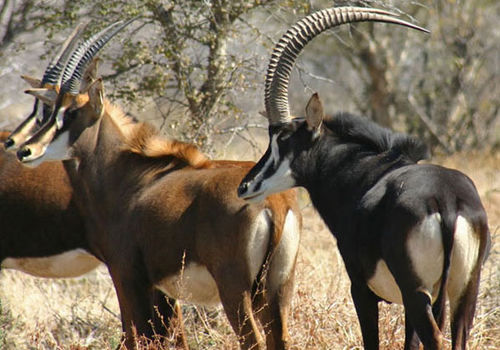
Sable
Hippotragus nigerSable
Introduction: The sable (Hippotragus niger) are less robustly built and lighter in mass than their close relatives the roan. It is a horse-like antelope with a long mane and easily identified by their distinctive swept-back horns. They are a savannah woodland species, dependent on cover and the availability of water. They prefer open woodland or grassland with medium to high stands of grass and avoid woodland with a high density of trees or where the grass is short.
Sable are gregarious and herds of 20 to 30 are common, with larger temporary aggregations of up to about 200. They may fall prey to lion, but most predators attack with caution.
Distribution: Sable occur in the north-eastern parts of Namibia, mainly the Zambezi Region (formerly the Caprivi Strip) and they have also been introduced into Waterberg Plateau Park and can be found around the newly opened Dolomite Camp in Etosha National Park
Diet: Predominantly grazers but will browse to a small extent in certain areas. They prefer fresh grasses of medium height.
Colouring: Males are jet black (hence the name) with a white facial pattern and underbelly. Younger females are chestnut in colour with thinner and shorter horns.
Breeding: Sable are seasonal breeders and females give birth to a single calf.
Size: Adult males stand about 135cm at the shoulder with a mass of between 180 - 270kg, females tend to be more slender. The curved horns can measure up to 1m.
Klein Windhoek

